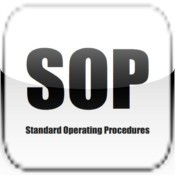USES OF STANDARD OPERATING PROCEDURE
Standard operating procedures enable organizations to gain a better understanding of their business process and identify areas that need improvement. Reasons to use a SOP include:
1.Helping one stick to a defined schedule
2.Assisting in training employees
3.Guaranteeing compliance standards are met.
4.Certifying that the procedure will not negatively impact the environment.
5.Ensuring the safety of all employees
6.Avoiding potential manufacturing failures
7.SOPs are still needed even when other published methods are available. The SOP should describe the procedure in more detail than the published content, as well as explain any differences between the SOP and the published method.
The SOP will fail if employees do not follow it. Management, specifically the direct supervisor, should monitor use of the standard operating procedure to ensure it is being properly employed and maintained.
BENEFITS OF USING A STANDARD OPERATING PROCEDURE
Two major benefits of using a standard operating procedure include consistency and a decrease in the number of errors made. An SOP can also help an organization evaluate employee performance, save time and money, and create a safer work environment.
In addition, SOPs can improve communication throughout an organization. If a task changes, the SOP is updated and redistributed to anyone who uses it, helping the organization efficiently communicate the change to anyone affected. SOPs also reduce the chance of miscommunication since the detailed steps leave little room for debate or questioning.
STANDARD OPERATING PROCEDURE – EXAMPLES
One example of how an SOP might be used can be found in a manufacturing environment. SOPs are used to record in detail the production line procedures used to train employees and make products.
An SOP might also be used in finance or administrative environments to record the processes needed to properly bill customers and collect payments.
A third example of how a standard operating procedure might be used is seen in customer service, sales, and marketing. SOPs can be used to explain the service delivery process and response times, instruct the management of customer complaints and comments or prepare sales quotes.
Banks may also use SOPs to determine the identity of a customer who has walked in and the Food and Drug Administration (FDA) can use SOPs to certify that a company’s operations meet agency standards.
Standard operating procedures can also be used to train employees to collect, track and store key performance indicator (KPI) reports or to create a consistent new client onboarding experience.
Finally, SOPs are frequently used when hiring and training employees. In this situation, an SOP can ensure the orientation and training of every individual remains consistent with their peers’ experience. An SOP can also guide managers through routine processes, from discipline and corrective actions to performance reviews.
CONCLUSION
In conclusion, SOPs are an important tool for ensuring consistency, quality, and safety in organizations across a wide range of industries. By providing clear instructions and a standardized way of performing tasks, SOPs can help to improve efficiency, compliance, and communication, while also serving as a basis for continuous improvement.
While SOPs can help to reduce human dependency to some extent, it is important to recognize that they cannot eliminate it entirely. SOPs provide clear instructions on how to perform a particular task or operation, which can help to ensure that tasks are carried out in a consistent and standardized way. This can reduce the reliance on individual employees to know how to perform tasks correctly and can help to ensure that tasks are completed correctly even if the employee performing the task changes.



